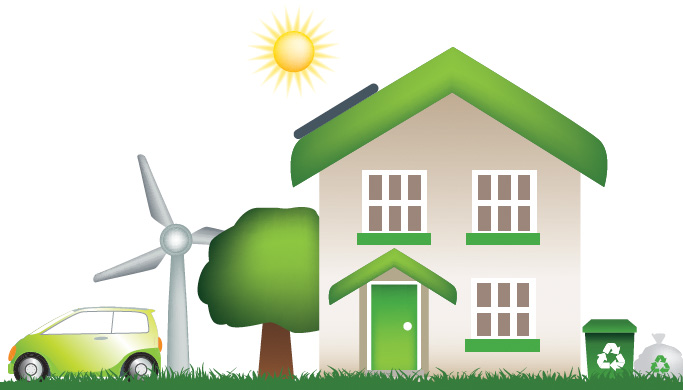
An Introduction to Green Homes
You've heard of a greenhouse, but what is a green home? These days, many people are remodeling their homes to "go green" or shopping for environmentally-friendly homes that will help them save money and live a healthier lifestyle. Read on for more information about this emerging trend and how to learn more about living a greener lifestyle inside a cost-efficient, energy-efficient, healthier home.
1. What is a green home?
According to the U.S. Green Building Council, a green home uses less energy, water and natural resources, creates less waste, and is healthier for the people living inside compared to a standard home . Green homes are known for incorporating smart design, technology, and construction and maintenance practices to significantly lessen its negative impact on the environment and improve the health of its inhabitants.
2. What are the benefits of buying a "green" home?
Green homes are healthier, more cost-efficient, and environmentally friendly. Click here for a list of benefits outlined by the U.S Green Building Council that detail how owning a green home is good for your health, your wallet and our environment.
Green homes have the ability to save residents money on utility bills and the potential to help reduce health problems like asthma. According to a recent study by McGraw-Hill Construction and the U.S. Green Building Council , 87 percent of green homeowners surveyed were either more or much more satisfied with their new homes than with their previous non-green homes—noting improved energy efficiency, health and indoor air improvements as key benefits of going green.
The same survey revealed that "going green" was the top reason cited for home renovations, with 42 percent of respondents saying environmental benefits such as energy savings and healthier air were their main reason for home improvements. That's more than other common reasons for remodeling, including increased comfort (34 percent) and improved appearance (24 percent).
3. What are some characteristics of a green home?
The U.S. Green Building Council offers a Green Home Checklist that can help you identify whether the home you are considering purchasing is truly a green home. The Council says that this checklist can help you ensure that you get a healthier, high-performance home that costs less to operate and has fewer environmental impacts than a traditional home that doesn't have these "green" elements.
Some of the key items on the Green Home Checklist include:
Smaller houses that are close to stores and parks that you can walk to and from
Energy-efficient lighting, heating, cooling and water-heating systems
ENERGY STAR® ratings on appliances, windows and exterior doors
Sunshades on the southern and western facades to block hot Summer sun
Windows, clerestories, skylights and other strategies that bring daylight to the home's interior
Non-toxic building materials, salvaged materials, and materials with significant recycled content
Water-conserving irrigation systems and water-efficient kitchen and bathroom fixtures
4. How do I know if a home is truly "green"?
In addition to researching the characteristics of a green home, there are green home programs that rate how energy-efficient, cost-effective, and healthy a home is according to their specifications and requirements. There is a well-known voluntary rating system that promotes the design and construction of high-performance green homes known as the Leadership in Energy and Environmental Design (LEED) rating system. There are also more than 70 local or regional green home building programs that exist in the United States that can help you learn more about what constitutes a home with the label of "green".
5. Where can I learn more about buying green?
BECU recommends an excellent website called the GREEN GUIDE for additional information about living "green". Dubbed the "green living source for today's conscious consumer", the GREEN GUIDE makes living in an environmentally-aware way easy, understandable, and practical by showing people how to make small changes that add up to big benefits for their wallets, for their health, and for the health of the planet.
Additional online resources about environmentally-friendly housing include:
U.S. Green Building Council: www.usgbc.org
Healthy Homes Partnership: www.healthyhomespartnership.net
Healthy House Institute: www.healthyhouseinstitute.com
Green Home Guide: www.greenhomeguide.org
Source